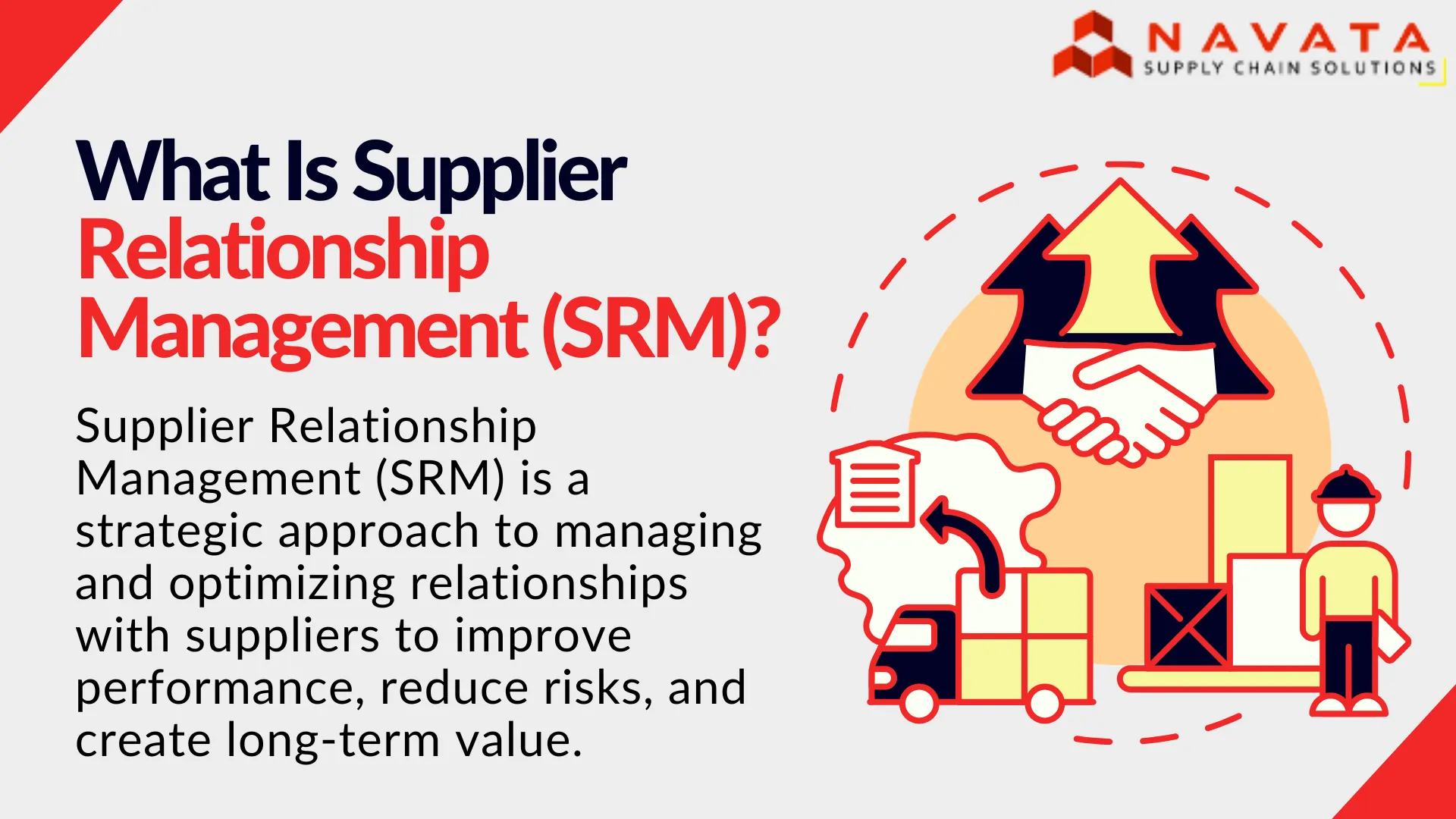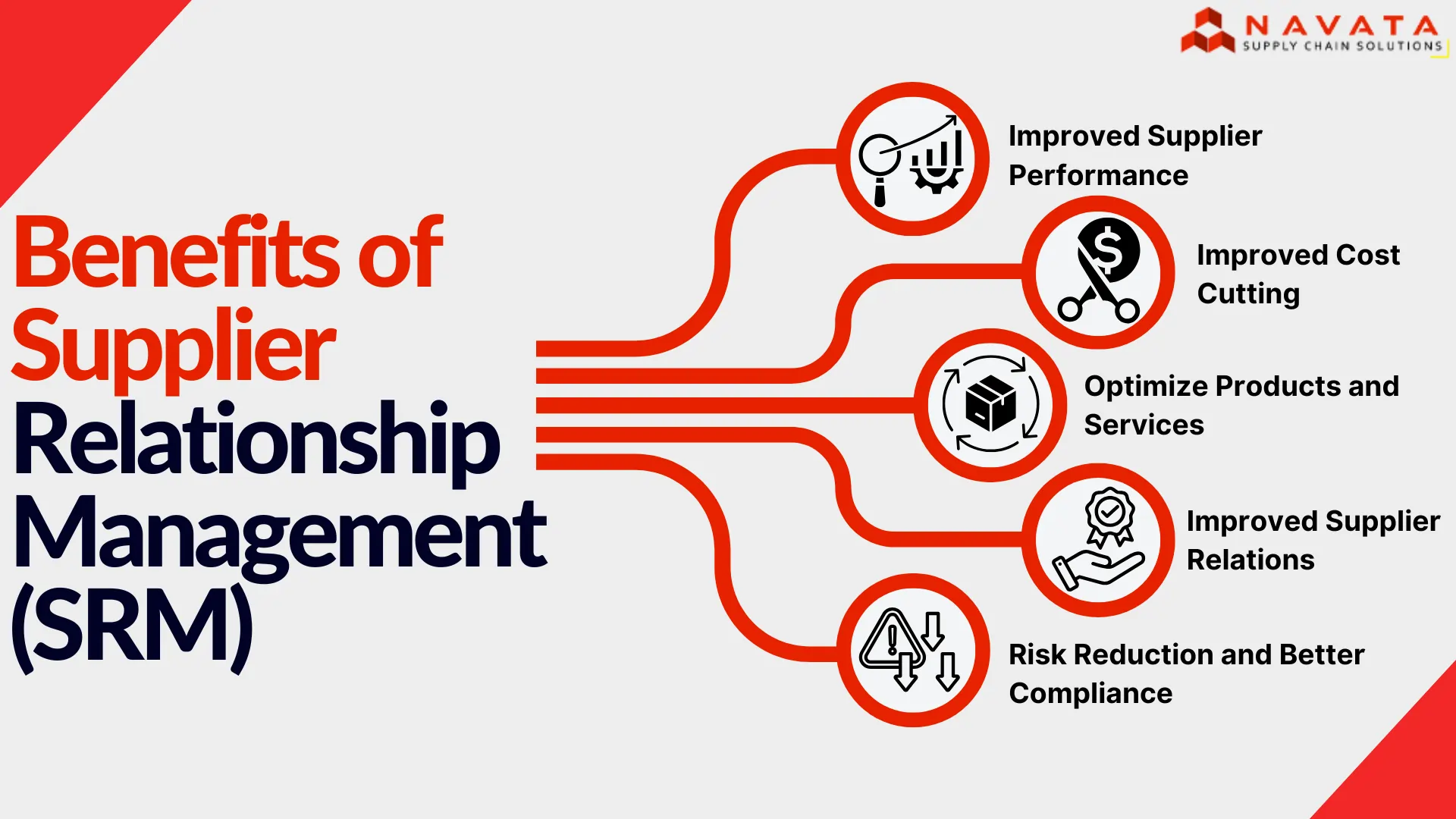Understanding Supplier Relationship Management (SRM)
Supplier Relationship Management (SRM) is the systematic supplier assessment and development process to improve capability, performance, and strategic fit with organizational objectives. It entails analyzing supplier capability and potential, identifying the right activities to perform throughout the task association life cycle, and managing all dealings throughout the span of the supplier relationship to optimize the worth. Unlike conventional, tactical buying, Supplier Relationship Management (SRM) aims at building long-term, win-win partnerships with strategic suppliers in order to increase value and eliminate threats.
Supplier relations management enables new value to be discovered and progressive procurement and supply chain risk management to be developed. Widely acknowledged Supplier Relationship Management (SRM) elementary activities include supplier information management, compliance, risk management, and performance assessment. This makes this an important tool used in the current procurement strategies to enable organizations to remain competitive and to avoid situations where their supply chain is threatened.

Importance of Supplier Relationship Management (SRM)
Supplier Relationship Management (SRM) therefore is a systematic approach to assessing and managing the relationship with the vendor who supplies an organization with products, materials, and services. It entails evaluating the suppliers’ performances in relation to business success and procedures for improving them. This is because, through the evaluation of the value that each supplier provides, Supplier Relationship Management (SRM) helps a business to know which suppliers are most important for continued operations and efficient running.
Also known as supply chain relationship management, SRM is a discipline that assists supply chain practitioners in procurement, project management and operations to develop better relationships with suppliers. This approach is helpful to ensure that businesses achieve the best value out of their investments, minimize the risks as well as have efficient operations. By developing improved supplier relationships with appropriate suppliers, organizations can gain greater efficiency and maintain competitive advantages.
Components of Supplier Relationship Management (SRM)
Supplier Segmentation
Supplier segmentation is a process of supplier classification that aims to identify their strategic importance and their contribution to the business organization. This entails a consideration of factors such as cost, quality, risk and innovative capabilities. High-value suppliers should be given priority since they can help organizations to focus on key supplier development efforts and other strategic goals.
Strategic supplier segmentation allows organizations to think systematically and concentrate on cooperation with important suppliers while improving the handling of less significant ones. This approach helps to build better relations, encourage creativity, and guarantee that the best suppliers share the company’s objectives and requirements.
Performance Management
Performance monitoring is the systematic assessment and monitoring of the suppliers’ performance based on standards like delivery reliability, product quality, and costs among others. By tracking these factors often, one is able to see whether a supplier is meeting his or her obligations as agreed in the contract. It is mutually beneficial for suppliers to receive constructive feedback so as to enhance their processes and hence the results.
This approach of continuous improvement creates accountability, increases trust, and ensures that suppliers are on par with the organizational objectives. Performance management enhances supply chain relationships and guarantees the delivery of superior value to the supply chain members.
Collaboration & Communication
Trust and synergy with suppliers involve working with them and talking with them frequently. Interactions, information sharing and solving of issues together set the platform for shared benefits. Communication is open to encourage suppliers to know the goals and issues of the business so that they can adapt accordingly.
Partnership activities including co-creation and collaborative planning enable optimization of processes as well as the creation of value within the supply chain. This alignment strengthens the bond, minimizes miscommunication, and delivers lasting goals concurrently as it improves the adaptability and robustness of the supply chain.
Risk Management
Risk management is therefore another element in managing supplier relationships and entails activities such as evaluating the risks arising from the supplier relations including things like financial problems, non-conformity or disruption of supply. Therefore, these issues should be addressed by the business so as to minimize risks and promote continuity of operations. Others include routine risk evaluation, planning on the occurrence of the improbable, and sourcing in more than one way to reduce the shock of a nasty experience.
Proper risk management not only protects the supply chain but also improves the supplier’s credibility and reduces the risk of organizational loss that could compromise the supply chain’s reputation, creating a better business climate.
You May Also Like to Read: The Importance of Supply Chain Consultancy Services for Modern Business Growth
Process of Supplier Relationship Management (SRM)
Identify Strategic Suppliers
Analyzing and segmenting your supplier base is the first step in identifying suppliers critical to business success. Prioritize those offering high value, innovation, or unique capabilities. By focusing on these key suppliers, you can allocate resources effectively and develop targeted strategies. Strategic suppliers contribute significantly to cost efficiency, quality improvement, and competitive advantage. Building stronger relationships with them ensures that your supply chain remains robust, resilient, and capable of adapting to market demands.
Set Clear Goals and KPIs
Define specific objectives for your supplier relationships, such as reducing costs, improving delivery reliability, or enhancing product quality. Establish key performance indicators (KPIs) to measure these goals and ensure alignment with overall business strategies. Clear goals help set expectations, drive accountability, and create a shared vision between you and your suppliers. Regularly monitoring progress against these KPIs ensures continuous improvement and supports the long-term success of supplier partnerships.
Leverage Technology
Incorporate Supplier Relationship Management (SRM) software to optimize supplier management processes. Technology streamlines supplier segmentation enhances communication, and automates workflows. With advanced data analysis capabilities, businesses can track performance metrics, gain insights, and make informed decisions. Tools like dashboards and alerts improve transparency and efficiency, enabling stronger collaboration with suppliers. Leveraging technology ensures a structured and proactive approach to managing supplier relationships effectively.
Communicate Effectively
Open and transparent communication is essential for fostering strong supplier relationships. Conduct regular meetings, share feedback, and engage in joint planning sessions to align objectives and address challenges collaboratively. This approach builds trust, ensures mutual understanding, and promotes innovative problem-solving. By working together, both parties can achieve shared goals, adapt to market changes, and enhance supply chain visibility while strengthening long-term partnerships.
Monitor and Improve
Continuously monitor supplier performance against established KPIs to identify areas requiring improvement. Conduct regular evaluations and provide constructive feedback to address gaps or inefficiencies. Implement corrective measures and update strategies to adapt to evolving business needs. Ongoing performance reviews and adjustments ensure that supplier relationships remain productive, aligned, and capable of delivering maximum value over time.

You May Also Like to Read: Top 10 Tips To Boost Your Logistics Performance
Benefits of Supplier Relationship Management (SRM)
Improved Supplier Performance
In Supplier Relationship Management (SRM), there is always a consideration of how the supplier performance is assessed using standard measures. It allows businesses to evaluate performance continuously, find out where improvements are needed, correct inefficiencies, and establish goals. When expectations are set and communicated, and when feedback is sought and shared, suppliers are able to enhance their performance.
In the long run, suppliers get closer to the business objectives, thus guaranteeing reliability, quality, and service. This constant performance evaluation in the end leads to increased reliability and effectiveness thus the long-term success of both the supplier and the company.
Improved Cost Cutting
In the context of Supplier Relationship Management (SRM), businesses are able to discover where they can cut costs by engaging with suppliers to obtain improved terms and conditions, improving internal processes, and eliminating unnecessary expenses. Suppliers are also useful in developing strategic partnerships that enhance procurement and hence the general functioning of the business.
Through information sharing, problem-solving, and solution-finding, it will be possible to achieve economies of scale, and lower procurement costs and overheads. This results in the best use of resources and the greatest value derived from suppliers and hence reduced cost and enhanced profitability.
Optimize Products and Services
Supplier Relationship Management (SRM) promotes quality since the relationships that are developed are based on trust and the mutual benefits that are to be gained. The benefits of collaboration, in this case, include the ability of different businesses to convey quality expectations, exchange information and enforce mutual quality assurance measures.
When suppliers appreciate business needs, they are likely to focus on quality in their supplies hence reducing defects, delivering on time, and enhancing customer satisfaction. Supplier Relationship Management (SRM) involves both businesses and suppliers in the search for solutions to quality and errors while looking for ways to innovate thus leading to improved products and services.
Improved Supplier Relations
Another objective of Supplier Relationship Management (SRM) is to foster strategic rather than tactical relationships in order to develop more than one form of business relationship. Through the time spent in the identification of the needs and wants of suppliers, businesses build a solid base of trust. Integration involves open communication, and mutual understanding of goals and objectives, which helps to make suppliers more dedicated and loyal.
Suppliers who are appreciated and encouraged are likely to give your business priority, offer you good terms, and ensure that they meet all your requirements hence making the relations more secure and long-lasting.
Risk Reduction and Better Compliance
Risk management is an important aspect in any organization and Supplier Relationship Management (SRM) has the responsibility of managing risks in the supply chain. Supplier management allows the business to identify and manage risks that may include supply disruptions, poor quality supplies, and noncompliance with the set standards. This means that constant checks and communication help to identify problems early and correct them as soon as possible.
Supplier Relationship Management (SRM) also helps the organization to minimize the cases of non-compliance with legal, regulatory, and industrial requirements. This not only reduces operational disruption, safeguards the organization’s image, and results in a more robust and less vulnerable supply chain.

Conclusion
Supplier Relationship Management (SRM) is one of the most essential business strategies in the current world, helping in the creation of a strong and efficient supply chain. Through the approaches of supplier segmentation, goal setting, supplier enablement, and communication, organizations can create the best supplier performance and develop effective supply chain partnerships. SRM guarantees cost reduction, better product quality, and risk management besides synchronizing supplier activities with business goals.
All these advantages come in a package that boosts operation efficiency, sustainability, and competitiveness. Under current conditions of the high volatility of markets and global risks, strategic relations management is crucial for sustainable growth, risk management, and the development of a strong, flexible supply chain in a changing world.
Thanks For Reading: What Is Supplier Relationship Management (SRM)?
Powered By 360Presence


